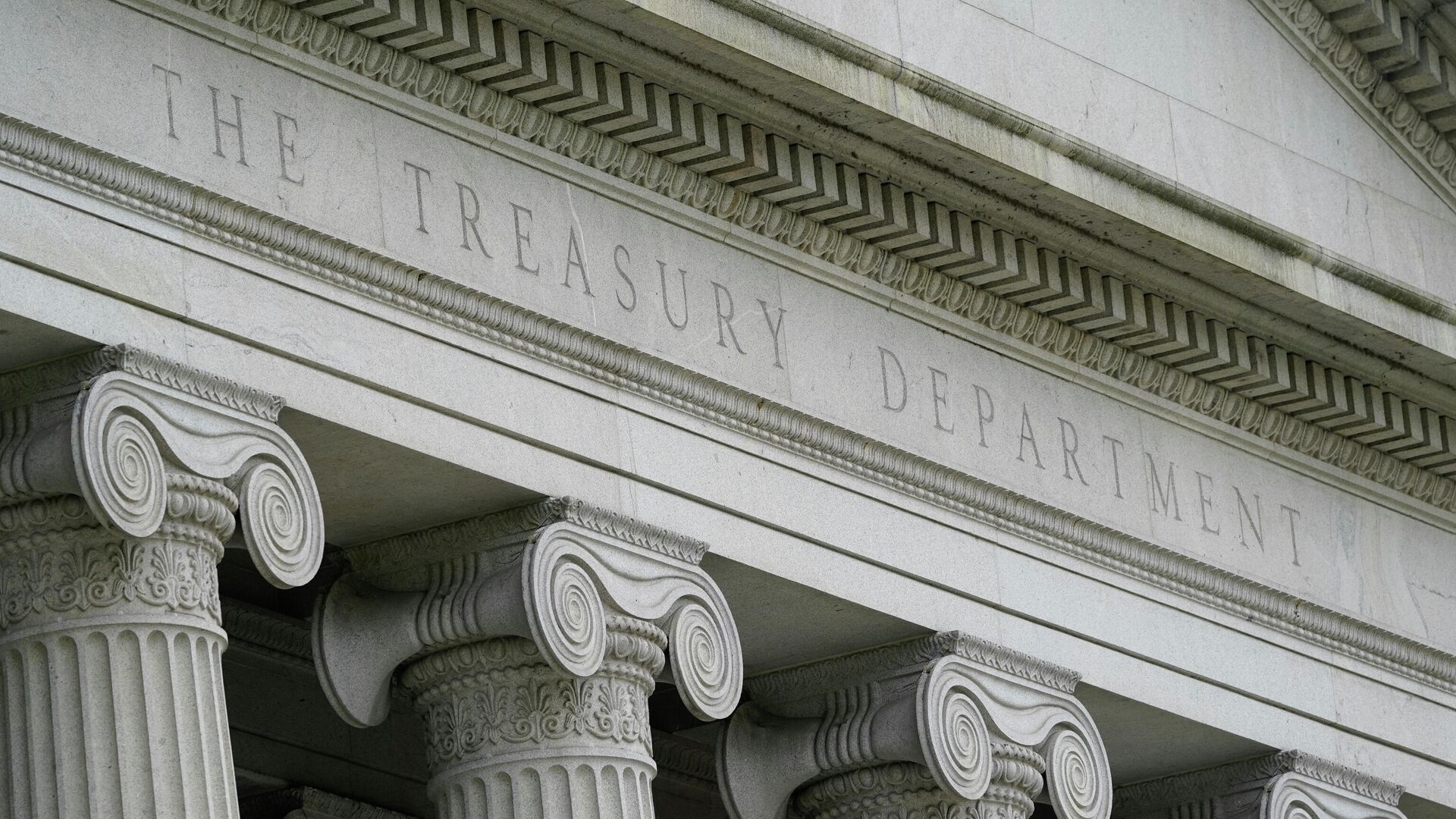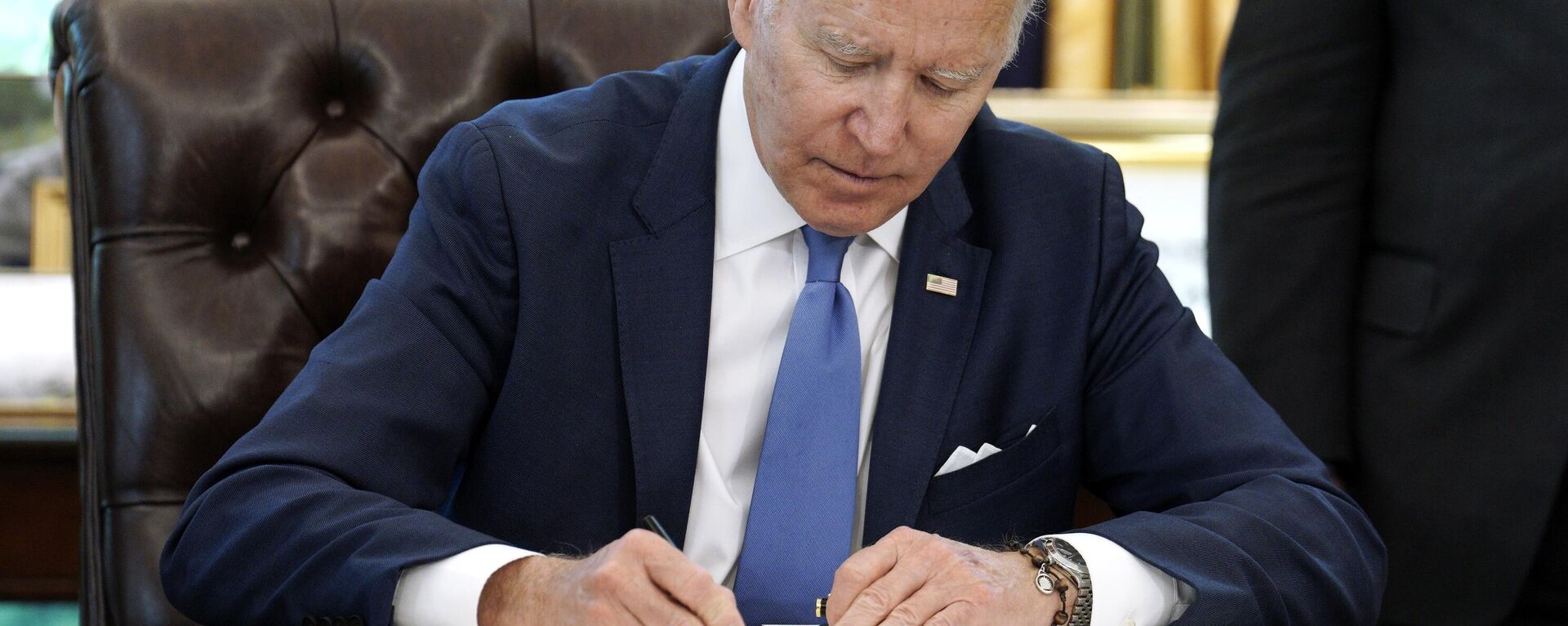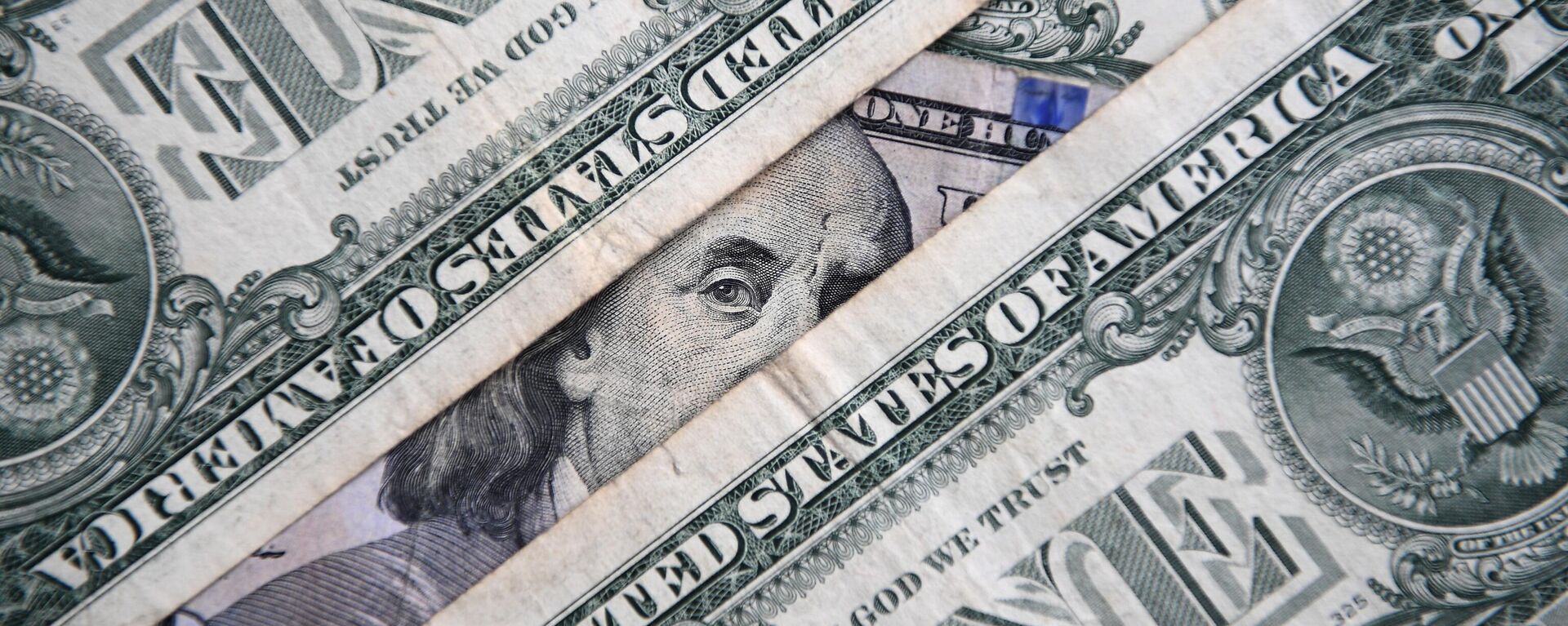https://sputnikglobe.com/20230607/us-borrowing-spree-expected-post-debt-ceiling-row-1110977654.html
US 'Borrowing Spree' Expected Post-Debt Ceiling Row
US 'Borrowing Spree' Expected Post-Debt Ceiling Row
Sputnik International
Washington is expected to embark upon a “borrowing spree” to shore up cash lost during the protracted standoff over the debt ceiling, financial analysts told US media.
2023-06-07T13:16+0000
2023-06-07T13:16+0000
2023-06-07T13:16+0000
americas
us
us debt ceiling crisis
debt ceiling
us debt
janet yellen
us treasury
joe biden
https://cdn1.img.sputnikglobe.com/img/07e6/03/0b/1093794057_0:0:3072:1728_1920x0_80_0_0_1a00d09591aa8f00c9c5e059dc8dba12.jpg
Washington will have to embark upon a "borrowing spree" to shore up cash lost during the protracted standoff over the debt ceiling between the White House and the GOP, financial analysts and market traders told US media.An estimated $1.1 trillion in short-dated Treasury bills will need to be borrowed by the end of 2023, it is reported.As the US Treasury Department is said to be gearing up for one of the biggest Treasury bill issuance hikes in history, analysts referenced previous such events, brought on by the 2008 financial crisis, and the fallout from the COVID-19 pandemic in 2020. It is believed that the move by the Treasury to restore its depleted cash balances would drive yields on government debt further upwards. This, in turn, could trigger deposit flight, and the fallout from this made itself known only too well earlier in the year. Silicon Valley Bank's sudden collapse in March, followed by Signature Bank declaring bankruptcy two days later, shocked financial markets. The federal government was forced to step in amid a run by depositors after SVB admitted its investment portfolio of Treasury bonds had lost value thanks to the US Federal Reserve raising interest rates in a bid to tackle inflation. Ahead of the expected US Treasury drive to start the massive sale of government bonds, "yields had already begun to rise," cited experts added. They predicted that, in turn, the rise in yields could prompt banks to offer higher interest rates on savings accounts. The US Treasury’s energetic return to borrowing “could exacerbate stresses that were already on the banking system,” added Doug Spratley, head of the cash management team at T Rowe Price.Just before the debt ceiling row was resolved, government figures showed that the US Treasury Department's cash balance had plunged to its lowest level since 2017 - just $37.4 billion.The US officially reached its $31.4 trillion debt ceiling on January 19, with Treasury Secretary Janet Yellen announcing that “extraordinary measures” would be in place to avoid a default. Yellen was forced to move the deadline several times, finally estimating that her department would run out of funding by June 5 unless lawmakers raised or suspended the US debt ceiling. Finally, following heated debate, US President Joe Biden and Republican House Speaker Kevin McCarthy reached a final agreement to suspend the $31.4 trillion debt limit through January 1, 2025.
https://sputnikglobe.com/20230603/biden-signs-bill-to-raise-us-debt-ceiling-to-avoid-default-1110882170.html
https://sputnikglobe.com/20230529/why-debt-ceiling-deal-doesnt-mean-us-economy-out-of-woods-1110778935.html
americas
Sputnik International
feedback@sputniknews.com
+74956456601
MIA „Rossiya Segodnya“
2023
News
en_EN
Sputnik International
feedback@sputniknews.com
+74956456601
MIA „Rossiya Segodnya“
Sputnik International
feedback@sputniknews.com
+74956456601
MIA „Rossiya Segodnya“
us government borrowing spree, debt ceiling, short-dated treasury bills, treasury bill issuance, pressure on banking system, depleted cash balances, yields on government debt, deposit flight, massive sale of government bonds,
us government borrowing spree, debt ceiling, short-dated treasury bills, treasury bill issuance, pressure on banking system, depleted cash balances, yields on government debt, deposit flight, massive sale of government bonds,
US 'Borrowing Spree' Expected Post-Debt Ceiling Row
The Treasury burned through a great deal of cash while emergency measures were in place after the US reached its $31.4 trillion borrowing limit in January, and during the months-long tussle between US President Joe Biden and the GOP over a debt ceiling deal, government data showed.
Washington will have to embark upon a "borrowing spree" to shore up cash lost during the protracted
standoff over the debt ceiling between the White House and the GOP, financial analysts and market traders told US media.
An estimated $1.1 trillion in short-dated Treasury bills will need to be borrowed by the end of 2023, it is reported.
"The flood is coming," experts were cited as warning, adding that imminent pressures could be expected on the country’s banking system.
As the US Treasury Department is said to be gearing up for
one of the biggest Treasury bill issuance hikes in history, analysts referenced previous such events, brought on by the 2008 financial crisis, and the fallout from the COVID-19 pandemic in 2020. It is believed that the move by the Treasury to restore its depleted cash balances would
drive yields on government debt further upwards. This, in turn, could trigger deposit flight, and the fallout from this made itself known only too well earlier in the year. Silicon Valley Bank's sudden collapse in March, followed by Signature Bank declaring bankruptcy two days later, shocked financial markets. The federal government was forced to step in amid a run by depositors after SVB admitted its investment portfolio of Treasury bonds had lost value thanks to the US Federal Reserve raising interest rates in a bid
to tackle inflation.
“Yields will move higher because of this flood. Treasury bills will cheapen further. And that will put pressure on banks,” Gennadiy Goldberg, a strategist at TD Securities, was cited as saying.
Ahead of the expected US Treasury drive to start the massive sale of government bonds, "yields had already begun to rise," cited experts added. They predicted that, in turn, the rise in yields could prompt banks to offer higher interest rates on savings accounts. The US Treasury’s energetic return to borrowing “could exacerbate stresses that were already on the banking system,” added Doug Spratley, head of the cash management team at T Rowe Price.
Just before the debt ceiling row was resolved, government figures showed that the US Treasury Department's cash balance had plunged to its lowest level since 2017 - just $37.4 billion.
The US
officially reached its $31.4 trillion debt ceiling on January 19, with Treasury Secretary Janet Yellen announcing that “extraordinary measures” would be in place to avoid a default. Yellen was forced to move the deadline several times, finally estimating that her department would run out of funding by June 5 unless lawmakers raised or suspended the US debt ceiling. Finally, following heated debate, US President Joe Biden and Republican House Speaker Kevin McCarthy reached a final agreement
to suspend the $31.4 trillion debt limit through January 1, 2025.




